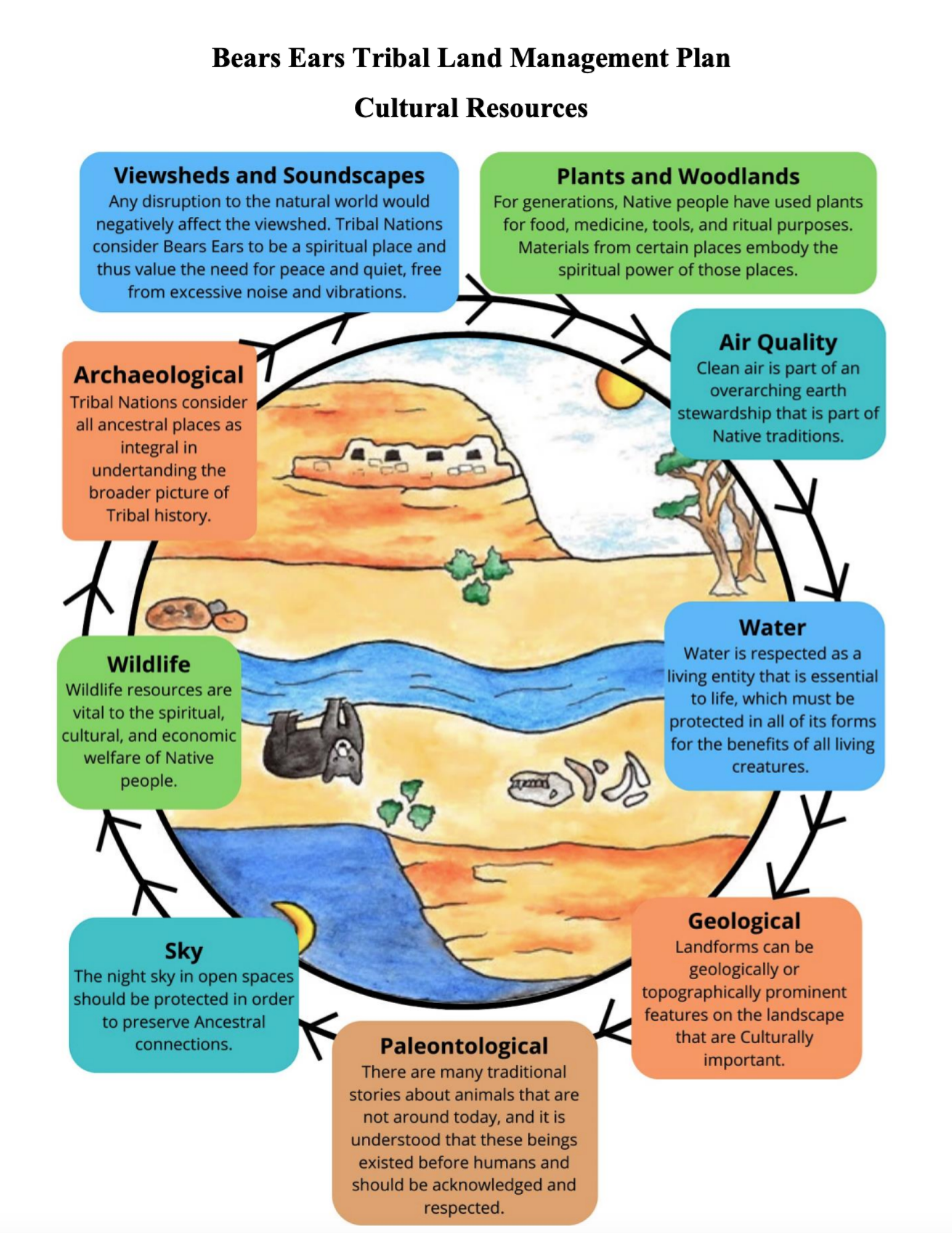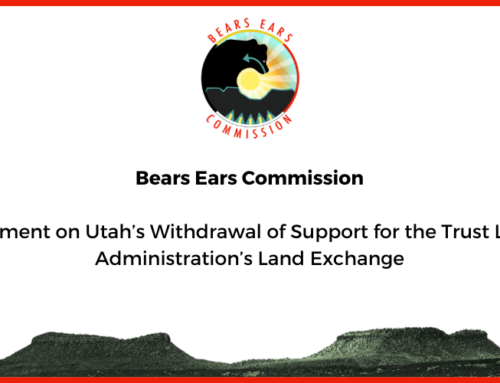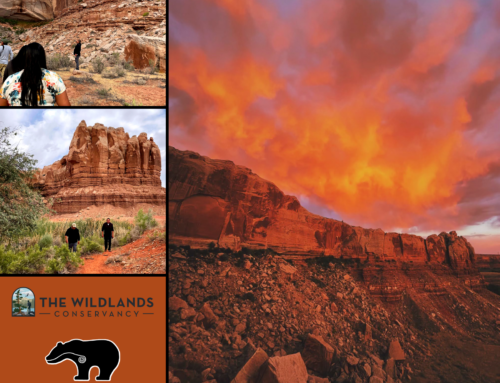Bears Ears Tribal Land Management Plan Summary
The five Tribes of the Bears Ears Inter-Tribal Coalition – Hopi, Navajo Nation, Ute Indian Tribe, Ute Mountain Ute, and Zuni — have deep traditional cultural beliefs that tie them to the land and have created a Land Management Plan (LMP) for Bears Ears National Monument (BENM) in line with these beliefs. The Land Management Plan provides a synthesis of Tribal perspectives on the connections to and stewardship of the Bears Ears landscape, emphasizing a holistic approach to all resources and prioritizing Indigenous Knowledge and perspectives.
Bears Ears was the first National Monument to be established at the request of a coalition of Tribal Nations. Both President Obama and President Biden explicitly stated the need for Tribal-Federal collaborative management of Bears Ears in Presidential Proclamations 9558 and 10285 that established and restored BENM. Collaboration between Tribal Nations and Federal agencies is seen as the foundation for both planning and implementation of day-to-day management decisions with the common goal of long- term, sustainable management of the Bears Ears landscape. The goals of collaborative management in BENM as envisioned in the LMP can be summarized as follows:
- Establish a proactive process for the Tribal Nations of the BEITC to collaboratively manage BENM with Federal land managers.
- Have Indigenous Knowledge and Native ways of knowing given equal consideration with knowledge from Western scientific processes.
- Create by-laws for equity between Tribes and Federal land managers.
- Secure Federal funding for and create a full-time collaborative Tribal Management staff to participate in collaborative management with Federal land managers.
- Establish and fund a Traditional Knowledge Institute that has programs that would have a Native benefit.
- Establish a reciprocal data sharing relationship between Tribes and Federal land managers with enhanced data acquisition for Tribes.
- Ensure Tribal input on collaborative land management planning.
In addition to identifying goals and opportunities for collaborative management, the Tribal Land Management Plan identifies threats and impacts to the landscape and current knowledge gaps. The LMP names extractive industries like oil and gas, livestock grazing, increased recreation and tourism, and climate change as the primary threats and impacts facing the Bears Ears landscape. Additionally, the LMP describes current gaps in knowledge and support for Native-led cultural, ethnobotanical, and other natural resource survey. Lastly, the lack of education for Federal managers on Native stewardship education is identified as a primary gap in current management practices.
Although prepared for the BENM, the LMP can be applied beyond the boundaries of the Monument, as it is intended to provide a foundation for collaborative management of ancestral lands that extend well beyond current reservation boundaries. This plan is intended to be a living document that will evolve as different needs on the landscape arise.
The following visual representation portrays the cultural resources described in the LMP and Tribal approaches to their stewardship. The circle with arrows represents the interconnectivity and interrelation of all resources, environments, spaces, and landscapes in Bears Ears. Cultural resources and natural resources can not be separated into categories – all of nature exists in sacred interrelation and unity with humans as part.
Find the visual representation that portrays the cultural resources Tribal Land Management Plan Summary – Two Pager.
Read the Entire Tribal Land Management Plan.
Find the Appendix here.




